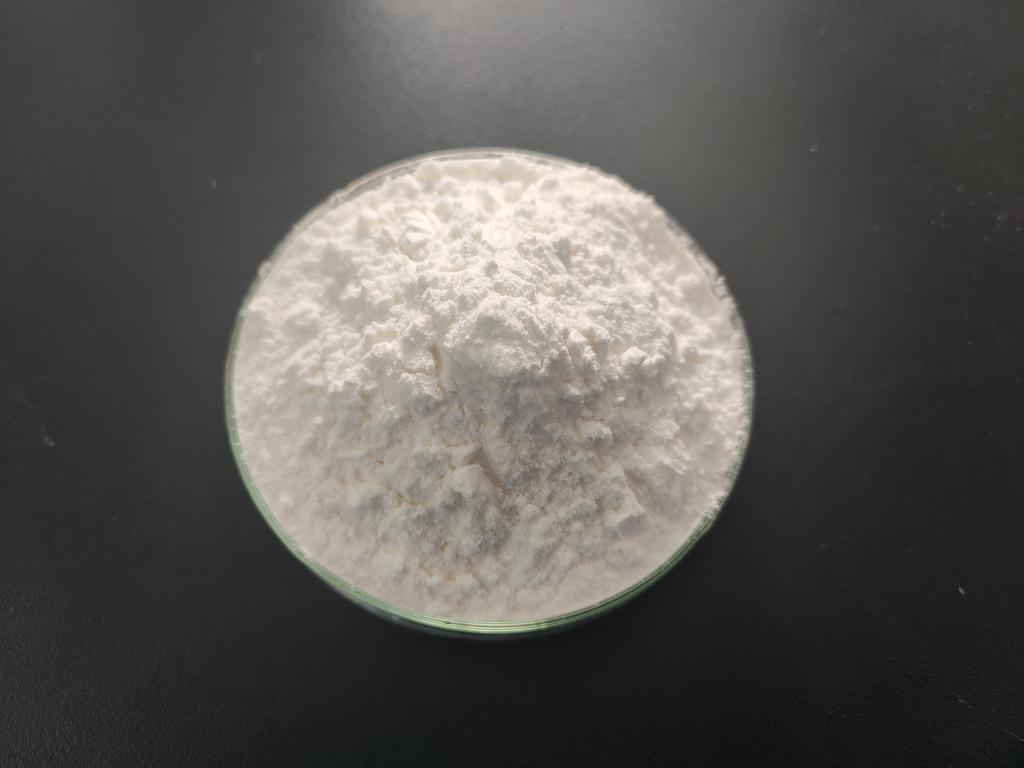Tel:+8618231198596

News
 CONTACT
CONTACT
 CONTACT
CONTACT
- Linkman:Linda Yao
- Tel: +8618231198596
- Email:linda.yao@dcpharma.cn
- Linkman:CHARLES.WANG
- Department:Overseas
- Tel: 0086 0311-85537378 0086 0311-85539701
News
Current Position:
Home >
News
>ε-Polylysine Hydrochloride Natural Solution for Chemical Residues in Agriculture.
ε-Polylysine Hydrochloride Natural Solution for Chemical Residues in Agriculture.
TIME:2023-11-16
The Challenge of Chemical Residues in Agriculture
Modern agriculture has made significant strides in enhancing crop yields and protecting plants from pests and diseases. However, the reliance on chemical pesticides and fertilizers has raised concerns about the environmental and health consequences of chemical residues in agricultural products. Residual chemicals on crops can find their way into the food chain, posing risks to human health and the environment.
Key Challenges Include:
Human Health Concerns: Pesticide residues in food can lead to health issues when consumed by humans. Long-term exposure to certain pesticides has been associated with a range of health problems, including neurological disorders and cancers.
Environmental Impact: Runoff from agricultural fields can contaminate water sources, leading to adverse effects on aquatic ecosystems. Pesticide residues may also impact non-target organisms, including beneficial insects and wildlife.
Development of Pesticide Resistance: Prolonged use of chemical pesticides can lead to the development of resistance in target pests, necessitating the use of higher chemical concentrations or more potent formulations.
ε-Polylysine Hydrochloride: An Overview
Derived from the fermentation of Streptomyces albulus, ε-polylysine hydrochloride is a polymeric compound composed of multiple lysine units. Its natural origin and unique antimicrobial properties make it an attractive alternative to chemical pesticides in agriculture.
Key Properties of ε-Polylysine Hydrochloride:
Antimicrobial Activity: ε-Polylysine hydrochloride exhibits broad-spectrum antimicrobial activity against bacteria, fungi, and some viruses, making it effective against a variety of plant pathogens.
Biodegradability: Being a natural compound, ε-polylysine hydrochloride is biodegradable, minimizing its environmental impact compared to synthetic chemicals that may persist in the environment.
Low Toxicity: ε-Polylysine hydrochloride has been found to have low toxicity, reducing potential risks to human health and non-target organisms.
Resistance Prevention: The mechanism of action of ε-polylysine hydrochloride makes it less prone to the development of resistance in target pests, offering a sustainable long-term solution.
Applications in Agriculture
Crop Protection: ε-Polylysine hydrochloride can be applied to crops as a natural biopesticide to control a variety of pathogens, including bacteria, fungi, and viruses. This contributes to the reduction of chemical pesticide use.
Seed Coating: Coating seeds with a formulation containing ε-polylysine hydrochloride provides protection against soil-borne pathogens during germination, promoting healthy seedling establishment.
Post-Harvest Preservation: ε-Polylysine hydrochloride can be employed in post-harvest treatments to extend the shelf life of fruits and vegetables by inhibiting the growth of spoilage microorganisms.
Soil Health Management: Incorporating ε-polylysine hydrochloride into soil management practices promotes a healthier soil microbiome by reducing the reliance on chemical inputs that may disrupt microbial communities.
Environmental Benefits
Reduced Chemical Runoff: By substituting chemical pesticides with ε-polylysine hydrochloride, the risk of chemical runoff into water sources is reduced, mitigating environmental contamination.
Preservation of Beneficial Organisms: The lower toxicity and targeted action of ε-polylysine hydrochloride help preserve beneficial insects, such as pollinators and natural predators, fostering a more balanced and resilient ecosystem.
Biodegradability and Soil Health: The natural origin and biodegradability of ε-polylysine hydrochloride contribute to soil health, avoiding the buildup of persistent chemicals that can negatively impact microbial communities.
Collaborative Efforts in Research and Development
The adoption of ε-polylysine hydrochloride in agriculture involves collaborative efforts among researchers, agricultural experts, and technology providers. Key aspects of this collaborative pathway include:
Research and Innovation: Ongoing research aims to further understand the efficacy and application methods of ε-polylysine hydrochloride in diverse crops. Collaborative projects between academia and industry contribute to a deeper understanding of its potential and limitations.
Field Trials and Validation: Collaborative efforts involve conducting extensive field trials to validate the effectiveness of ε-polylysine hydrochloride under various environmental conditions. These trials provide practical insights into its performance in real-world agricultural settings.
Regulatory Engagement: Collaboration with regulatory bodies is essential to ensure the approval and safe use of ε-polylysine hydrochloride in agriculture. Engaging in a dialogue with regulatory authorities facilitates the development of guidelines and standards for its application.
Knowledge Sharing and Extension Services: Collaborative initiatives extend to knowledge sharing and education programs for farmers. Extension services play a crucial role in disseminating information about the benefits, application methods, and safety considerations of ε-polylysine hydrochloride.
Future Directions and Considerations
As ε-polylysine hydrochloride gains recognition as a natural solution for minimizing chemical residues in agriculture, future directions and considerations include:
Customized Formulations: Research efforts may focus on developing customized formulations of ε-polylysine hydrochloride tailored to specific crops and pests, optimizing its efficacy in different agricultural contexts.
Integration with Sustainable Practices: Collaborative initiatives could explore the integration of ε-polylysine hydrochloride with other sustainable agricultural practices, such as organic farming, cover cropping, and precision agriculture.
Global Adoption and Accessibility: Efforts are needed to promote the global adoption of ε-polylysine hydrochloride, ensuring accessibility for farmers in various regions. This involves addressing regulatory barriers and facilitating technology transfer.
Long-Term Monitoring and Impact Assessment: Collaborative research should include long-term monitoring of ε-polylysine hydrochloride's impact on soil health, biodiversity, and overall ecosystem resilience. This ensures a comprehensive understanding of its sustainability.
Conclusion
ε-Polylysine hydrochloride emerges as a natural solution that holds promise for minimizing chemical residues in agriculture, contributing to a more sustainable and environmentally friendly approach to crop protection. Through collaborative efforts in research, development, and knowledge dissemination, this natural antimicrobial agent has the potential to reshape agricultural practices, reducing the reliance on synthetic pesticides and fostering a healthier balance between productivity and ecological integrity. As the agricultural industry navigates the path towards sustainability, ε-polylysine hydrochloride stands as a beacon of innovation, offering a collaborative pathway to a future where food production is not only abundant but also harmonious with the health of the planet and its inhabitants.
- Tel:+8618231198596
- Whatsapp:18231198596
- Chat With Skype







